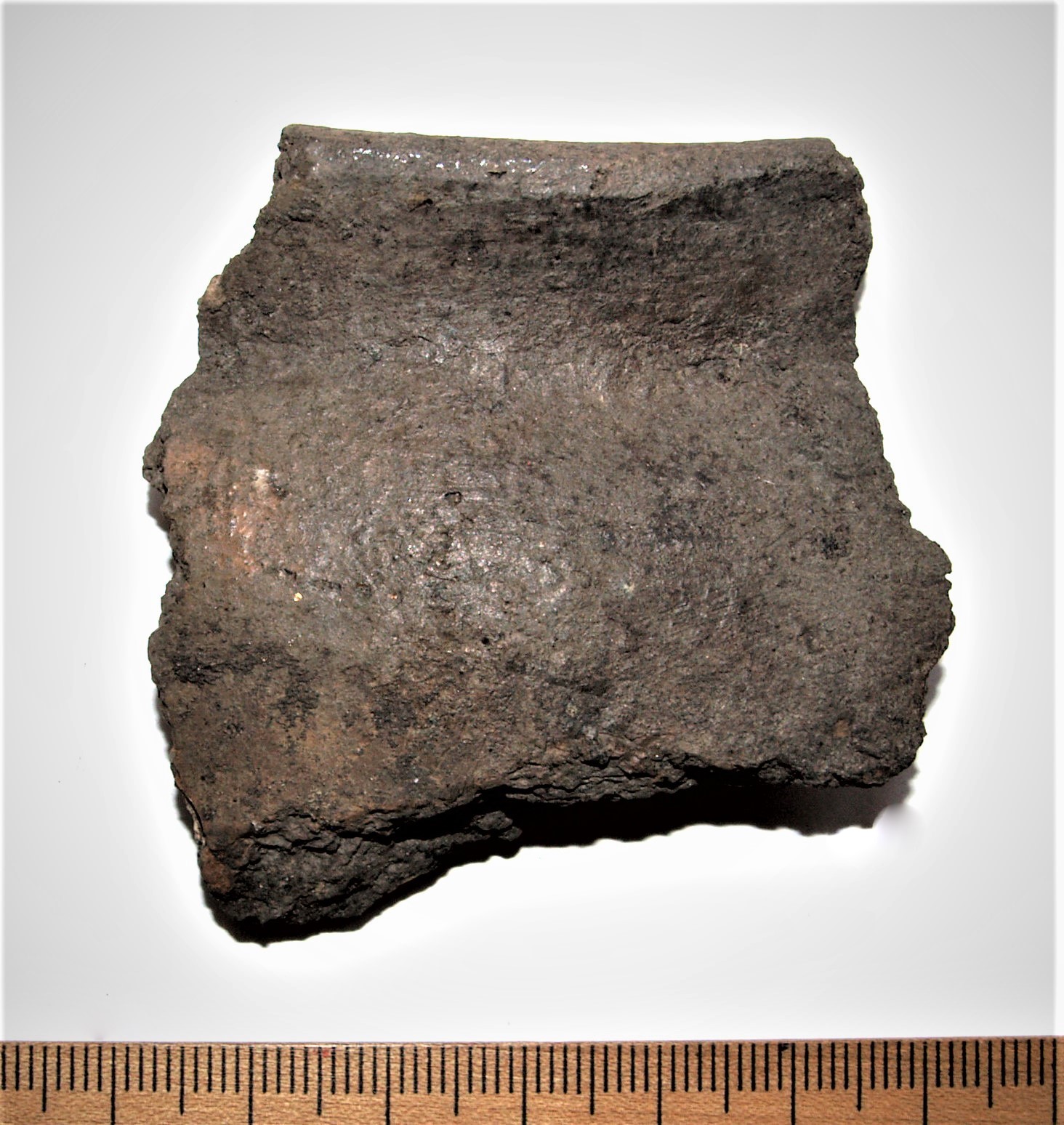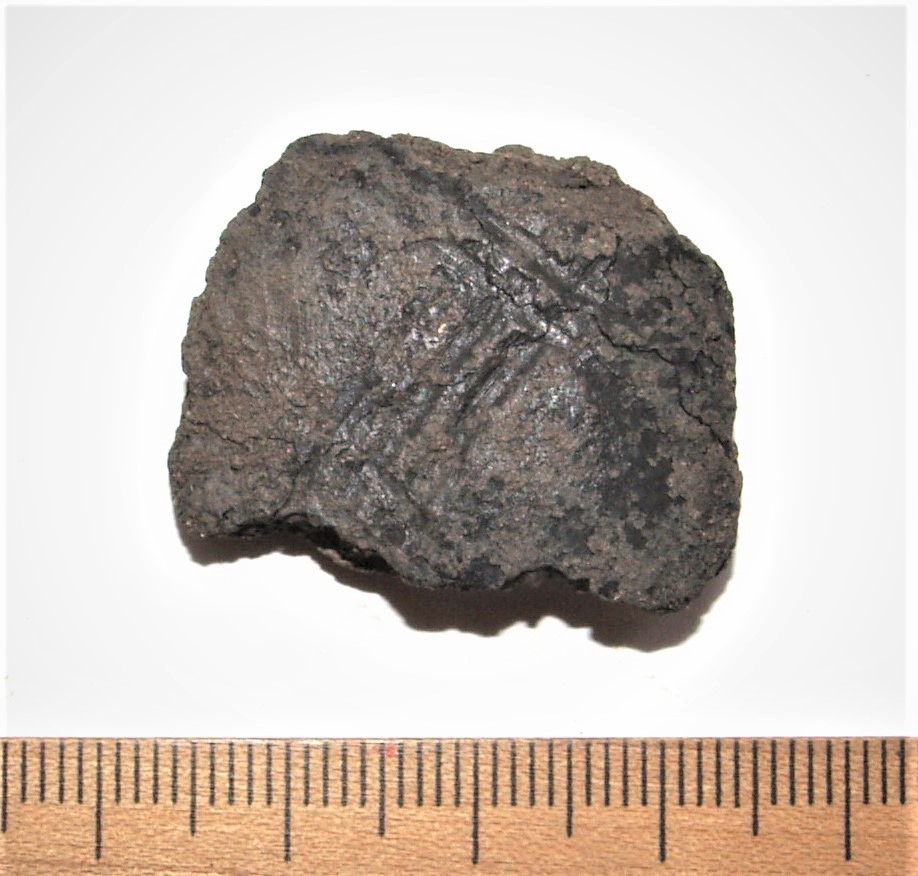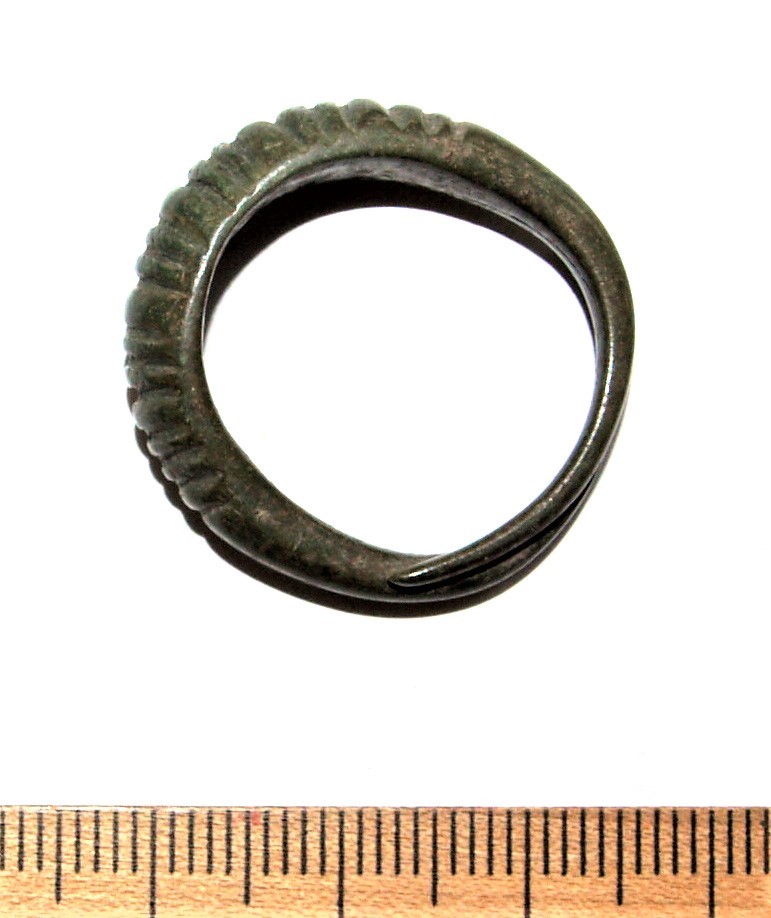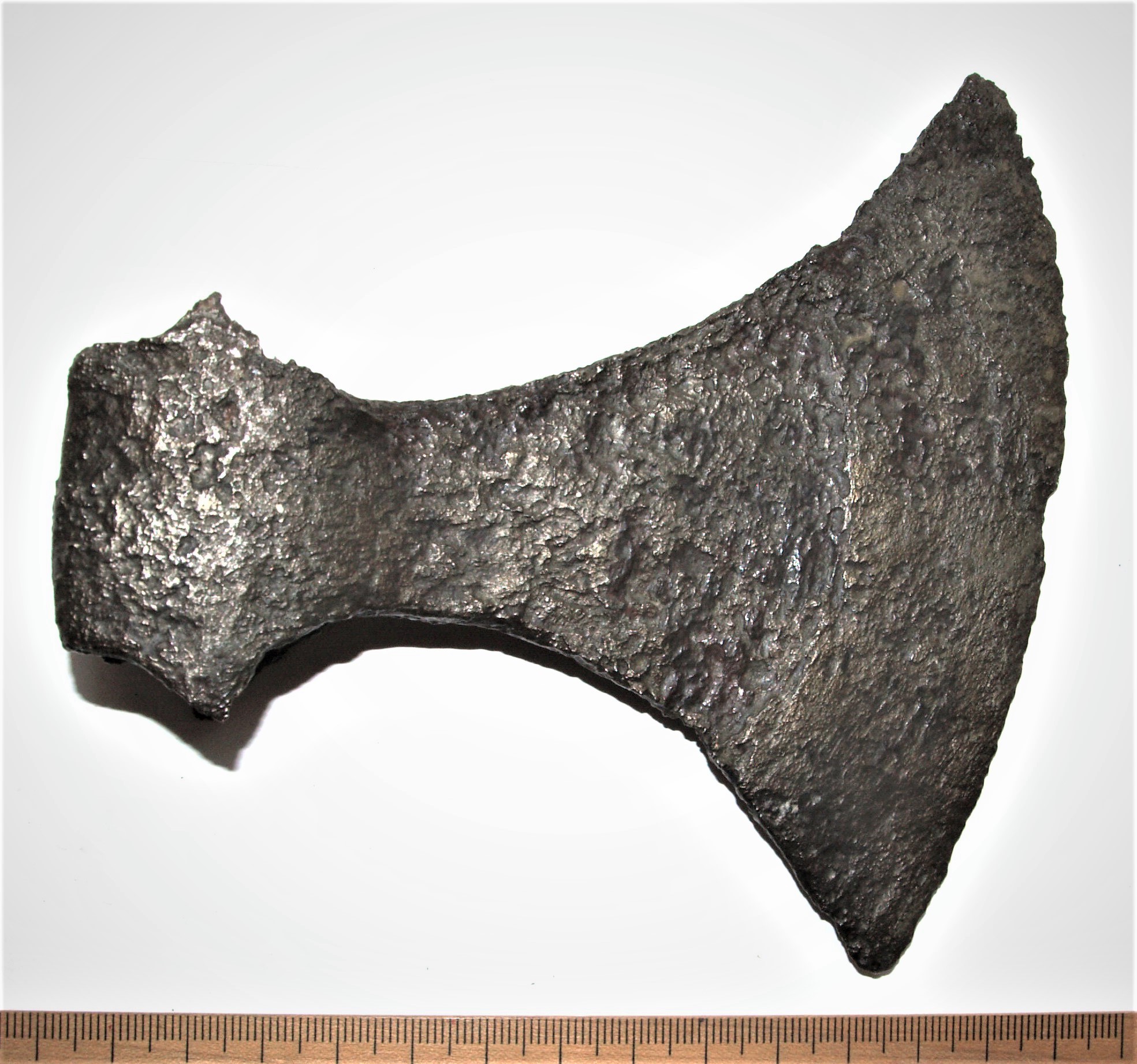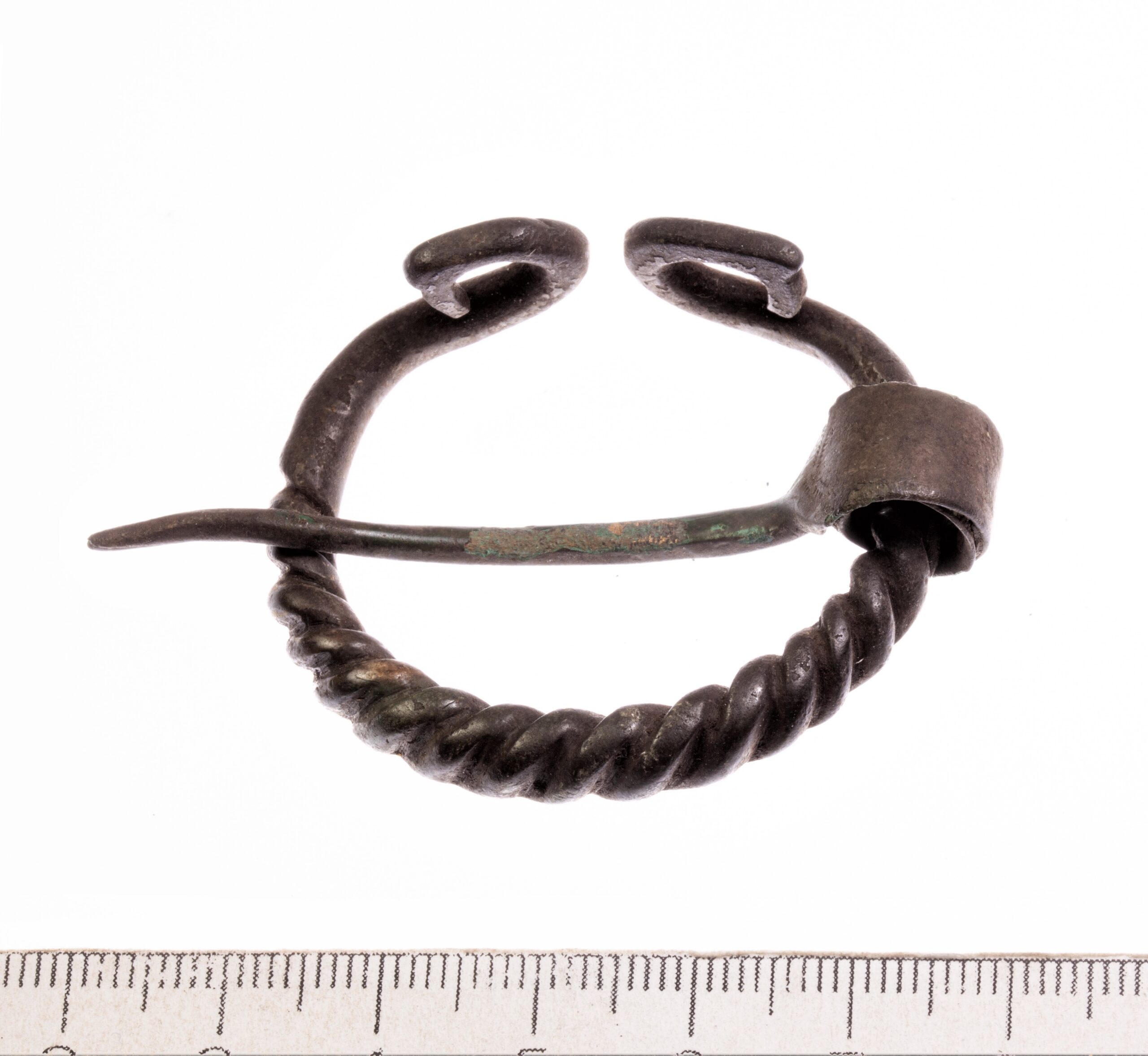Database
Our database is free to use for all history and archaeology enthusiasts. If you use our database, please do not forget to cite correctly:
Mägi, Marika; Palm, Piia Sandra. Archaeological Artefacts of Saaremaa. Foundation Osiliana / Tallinn University. Accessed: date.
The Osiliana Archaeological Database presents artefacts from Saaremaa and the surrounding small islands.
The database contains mainly Iron Age and Medieval finds that can be classified.
Undated metal or other pieces were generally excluded from the database.
Ceramics are represented by isolated examples.
The database is a work in progress and is constantly being updated.
Valjala hillfort
Pot rim, hand-made ceramic. Similar pots have been found e g in Varbola, Pöide, and Soontagana hill-forts.

Pot rim, hand-made ceramic. Similar pots have been found e g in Varbola, Pöide, and Soontagana hill-forts.
Literature:
Tvauri, A. 2005. Latest Iron Age Pottery In Estonia (from the 11th century to the middle of the 13th century). – Muinasaja teadus, 16. Tartu-Tallinn, 72-78. Read the article (ENG p. 177-181): here.
Valjala hillfort
Artefact, probably penannular brooch with a gnarl, copper alloy.



Artefact, probably penannular brooch with a gnarl, copper alloy. Dated according to the find context.


Bead.
Valjala hillfort
Potsherd of a pot wall, hand-made ceramic, decorated with rhombic checker. Pots with very similar decoration have been found e g at Rahu stone grave near Valjala, or at Soontagana hill-fort in West-Estonia. Rhombic checker decoration on ceramic was characteristic for Saaremaa, West- and NW-Estonia, the variant as here mainly for Saaremaa.


Potsherd of a pot wall, hand-made ceramic, decorated with rhombic checker. Pots with very similar decoration have been found e g at Rahu stone grave near Valjala, or at Soontagana hill-fort in West-Estonia. Rhombic checker decoration on ceramic was characteristic for Saaremaa, West- and NW-Estonia, the variant as here mainly for Saaremaa.
Literature:
Tvauri, A. 2005. Latest Iron Age Pottery In Estonia (from the 11th century to the middle of the 13th century). – Muinasaja teadus, 16. Tartu-Tallinn, 92-107. Read the article (ENG p. 177-181): here.


Tanged javelin head. Similar javelin head has been found, for instance, in grave No 5 at Dundaga Laukmuiźa, Couronia, which is dated to the second half of the 13th or the first half of the 14th century (Muižnieks & Žeiere 2021, Fig. 104).
Literature:
Muižnieks, V. & Žeiere, I. 2021. Dundagas Laukmuižas 13. – 14. gadsimta senkapi. The 13th-14th Century Cemetery of Dundagas Laukmuiža. – Latvias nacionālā vēstures muzeja raksti nr. 30. Arheoloģija. Rīga, fig. 104.
Valjala hillfort
Big spiral, perhaps finger-ring, bronze.


Big spiral, perhaps finger-ring, bronze.
Valjala hillfort
Finger-ring, bronze. This type of finger-ring has a thickened middle section with engraved diagonal grooves. A well-known type of ring in the archaeological material of the Estonian islands often found in both stone graves with cremations as well as inhumation burials.


Finger-ring, bronze. This type of finger-ring has a thickened middle section with engraved diagonal grooves. A well-known type of ring in the archaeological material of the Estonian islands often found in both stone graves with cremations as well as inhumation burials. Could have come into use already during the 12th century AD (Mägi 2002, 109).
Literature:
Mägi, M. 2002. At the Crossroads of Space and Time. Graves, Changing Society and Ideology on Saaremaa (Ösel), 9th–13th centuries AD. CCC papers: 6. Gotland University College, Centre for Baltic Studies; Institute of History, Department of Archaeology. Tallinn, 2002. Read the book: here. Look at the drawings of the archaeological excavations: here.
Mägi, M.; Malve, M. & Toome, T. (2019). Early Christian burials at Valjala churchyard, Saaremaa. – Archaeological Fieldwork in Estonia 2018, 93−118, 109. Read the article: here.
Valjala hillfort
M-type iron axe, found from the well.


M-type iron axe, found from the well. Similar to Petersen´s Type M axe, but the later variant that in Latvia is dated to the 13th-14th century (Mugurēvičs 2008, 201; Brūzis 2016, 189).
Literature:
Mugurēvičs, Ē. 2008. Viduslaiku ciems un pils Salaspils novadā. Rīga: Latvijas vēstures institūta apgāds.
Brūzis R. 2016. Tuvcīņas ieroči Latvijā 14.–16. gadsimtā. Rīga: Latvijas vēstures institūta apgāds.
Mullutu
Penannular brooch with lily-shaped terminals, copper alloy.

Photo: Jaana Ratas.
Fragment of a penannular brooch with lily-shaped terminals, copper alloy. Twisted ring. Somewhat similar brooch was found in burial No 1 at Valjala churchyard in 1971 (Mägi et al 2019). Based on the shape of the ring, as well as similar brooches in inhumation graves in Couronia and in St Peter’s churchyard in Riga, the brooch can be dated to the 13th-14th century, although similar types were used until the third quarter of the 15th century (Vaska 2017, 62-64).
Literature:
Mägi, M.; Malve, M. & Toome, T. 2019. Early Christian burials at Valjala churchyard, Saaremaa. – Archaeological Fieldwork in Estonia 2018, 93−118, 94. Loe artiklit: siin.
Vaska, B. 2017. Rotas un ornaments Latvijā no 13.gs. līdz 18.gs. vidum. Latvijas Nacionālais vēstures muzejs. Rīga.
The negative value refers to time Before Christ.

